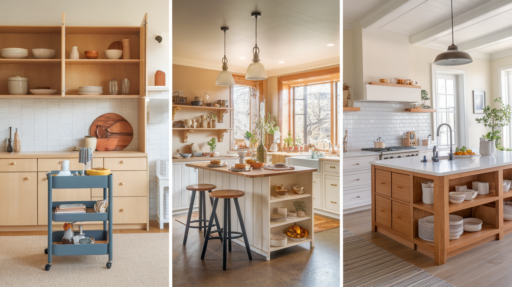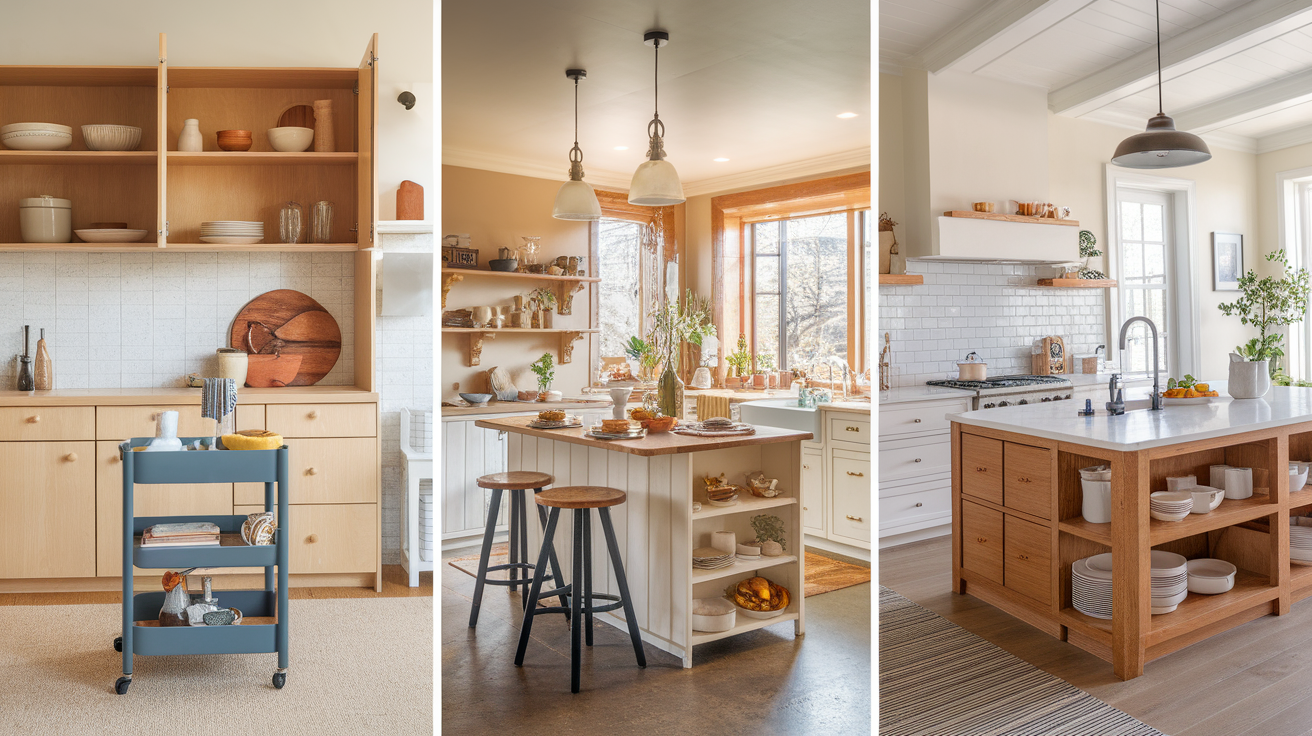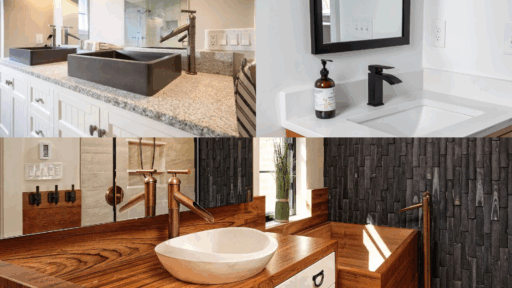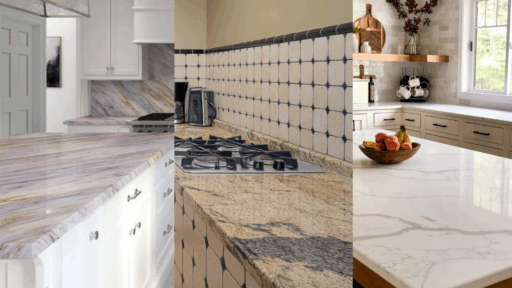Thinking about adding a kitchen island but not sure what size is right? You’re not alone.
A kitchen island can be really useful-it gives you more room to cook, store things, or sit and eat.
But getting the size wrong can make your kitchen feel crowded or hard to move around in. That’s where I can help.
I’ll walk you through what to think about before choosing an island size, how much space you actually need, and what works best for different kitchen layouts.
If your kitchen is big or small, there’s a way to make an island work for you. The goal here is to help you avoid common mistakes and feel sure about your choices.
I’ve kept things simple and clear so you can get answers quickly and start planning with confidence.
You deserve a kitchen that feels good and works even better. Let’s get started.
Why Kitchen Island Size Matters?
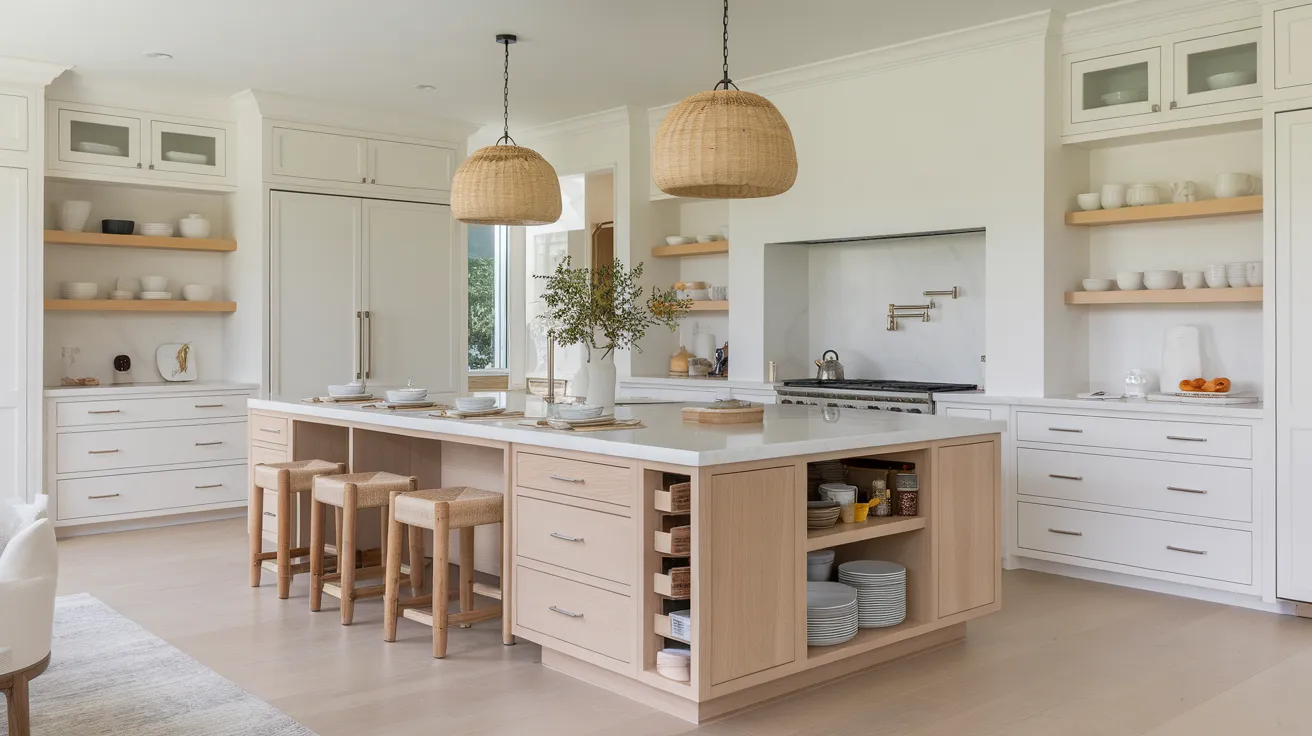
A kitchen island isn’t just about looks; it needs to fit well and work well. If it’s too big, it can block walkways and make the space feel tight.
If it’s too small, it might not be very useful. The right size helps you move around easily, cook with less stress, and enjoy time with family or guests.
You’ll need to think about how much space is around the island.
Can people walk by without bumping into anything? Will cabinet doors and appliances open all the way? These are small things that make a big difference.
Also, think about how you use your kitchen. Do you cook a lot? Do you want extra seating? Do you need more storage? Your answers can help you figure out what size island fits your life best.
A good-sized island can make your kitchen more helpful, more comfortable, and a lot more fun to use.
Standard Kitchen Island Sizes
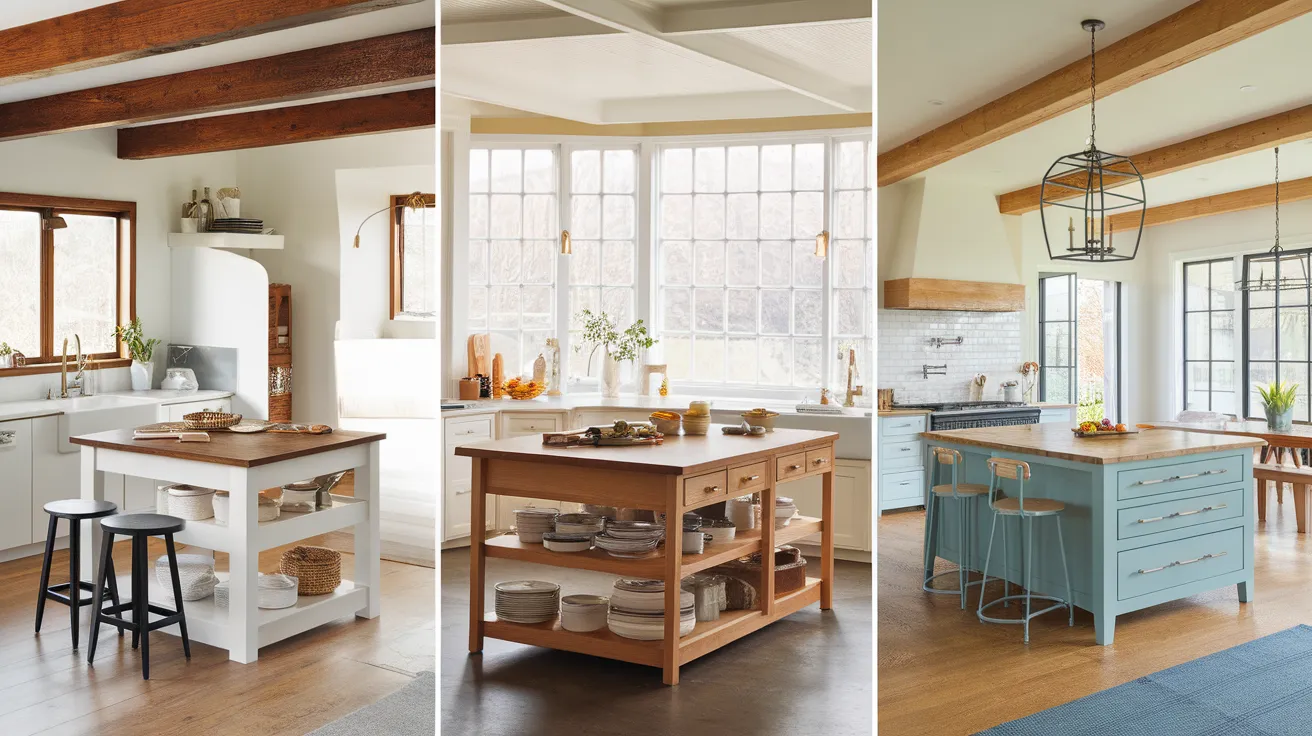
When choosing a kitchen island, it’s important to pick a size that fits your space and suits how you plan to use it.
- Small islands (24″ x 48″): Ideal for smaller kitchens where space is limited.
- Medium islands (36″ x 78″ or 40″ x 80″): Common in larger kitchens, providing space for prep, storage, and seating.
- Large islands (up to 4′ x 10′): Works well in big kitchens, but make sure it doesn’t take up more than 10-15% of the floor space.
Remember, islands come in different styles for different purposes; some are perfect for cooking, others for seating or extra storage. Always consider your kitchen layout first when choosing the right size.
How Much Room Do You Need Around Your Kitchen Island?
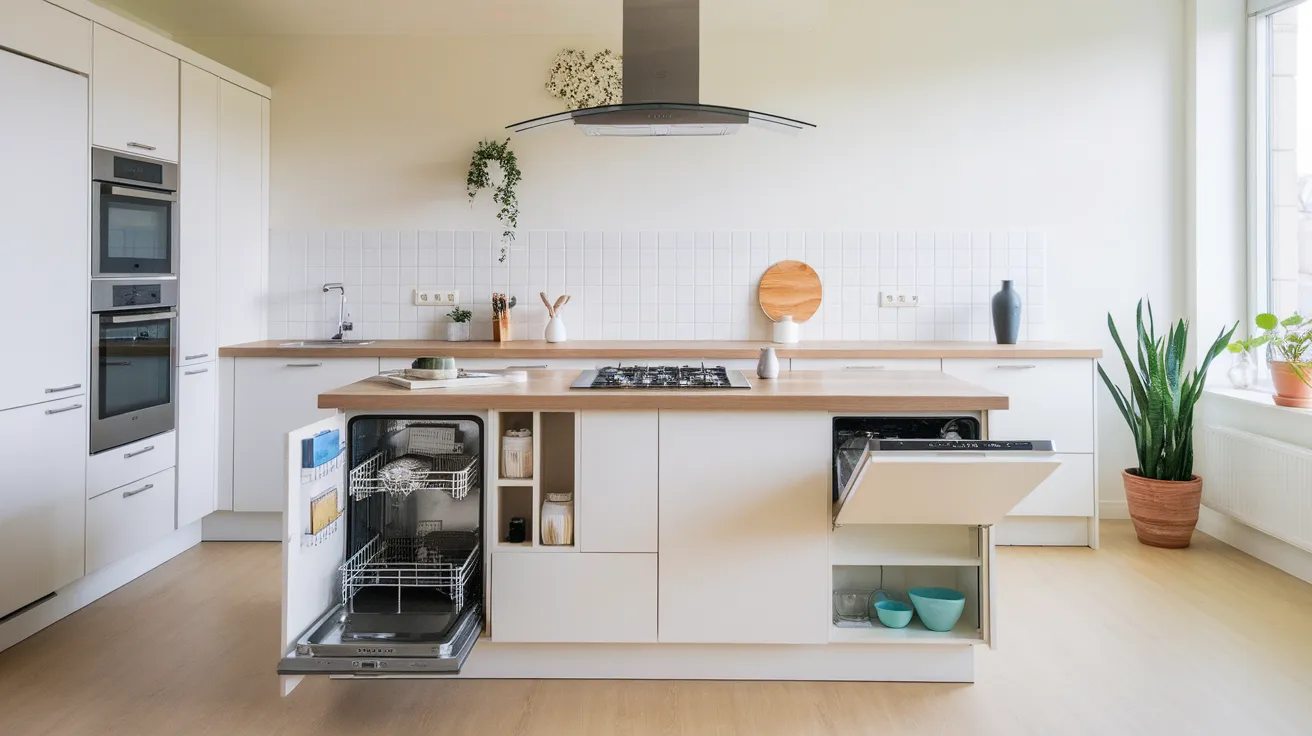
Even if the island itself fits, you need enough space around it to move comfortably. A good rule is to leave at least 3 feet (36 inches) of open space on all sides.
This lets people walk by, open cabinets, and use appliances without bumping into anything.
If more than one person uses the kitchen at the same time, having about 4 feet of space is even better.
Think about how the kitchen works every day. Can the oven door open without hitting the island? Can someone pass by while the dishwasher is open?
These are the kinds of things that make a big difference once the island is in place.
Also, if you’re adding stools or chairs, leave enough room for people to sit and slide their chairs back.
Planning for space around the island is just as important as picking the island size itself. It helps everything work better together.
How to Choose the Right Kitchen Island Size
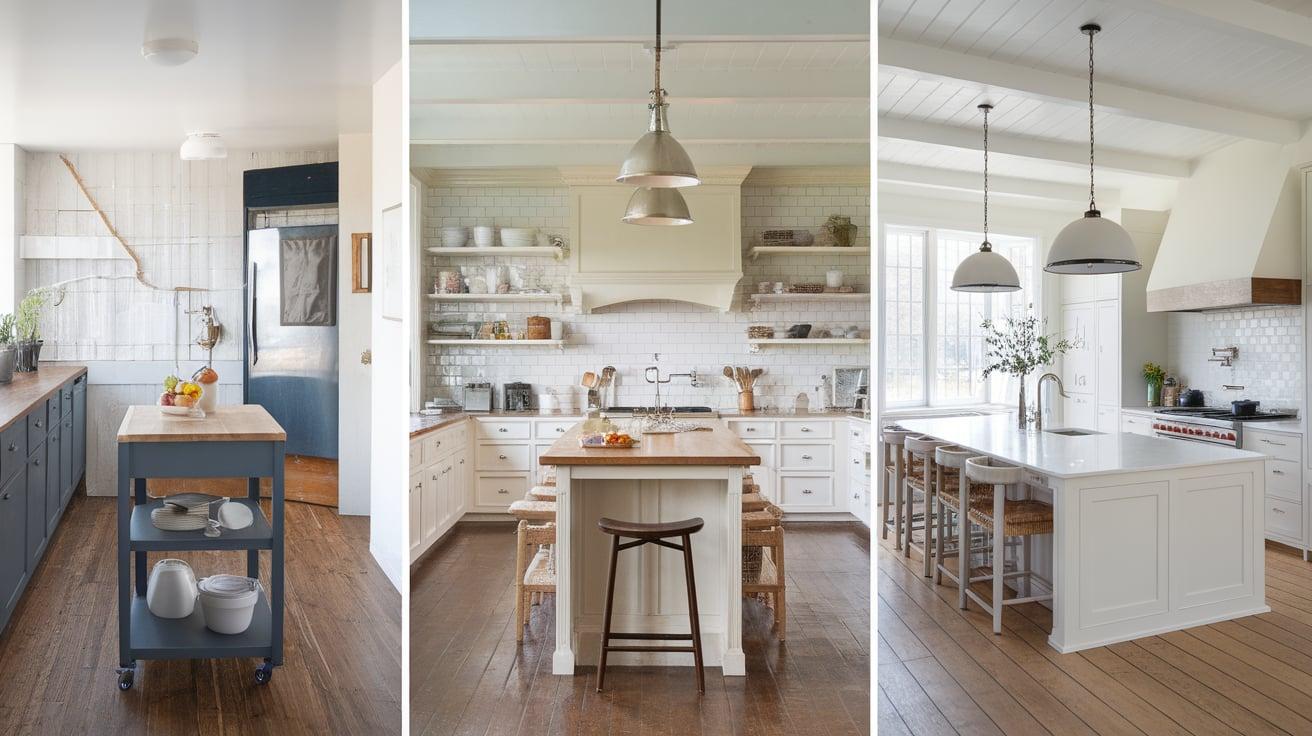
Choosing the right island size starts by evaluating your kitchen’s space and needs. Consider the following:
- Measure your kitchen space: Determine how much open floor space you have and how much you’re willing to use for an island.
- Consider the island’s purpose: Do you need extra cooking space, a place for kids to eat, or additional storage?
- Small kitchens: A narrow island or rolling cart works best for limited space.
- Medium kitchens: Go for a standard-sized island that provides ample workspace without crowding the room.
- Large kitchens: You might have room for a longer island with seating or even a sink.
- Consider kitchen traffic: Ensure the island allows everyone to move around easily without blocking the flow of the kitchen.
A good island should complement your kitchen, not get in the way. Use your space and needs to guide your choice.
Tips for Custom or Compact Kitchens
- Go narrow or short: Choose a smaller island that fits without blocking paths.
- Use a rolling island: These can be moved when needed and stored out of the way.
- Try a fold-out surface: Some islands have parts that fold down when not in use to save space.
- Pick built-in storage: Look for islands with drawers or shelves to keep things organized.
- Consider a peninsula: This connects to a wall or counter, saving space while still offering extra work surface.
- Check clearance: Make sure there’s enough room to open drawers, doors, and walk around.
- Think multi-use: A small island can be a prep space, snack area, or storage spot all in one.
Common Mistakes to Avoid
- Choosing an island that’s too big: It might look nice, but it can make your kitchen feel cramped and hard to move around in.
- Not measuring the space around it: Always leave enough room, at least 3 feet, on all sides so people can walk and appliances can open.
- Ignoring your kitchen’s layout: An island should match how your kitchen works, not block important spots like the stove or sink.
- Forgetting seating space: If you want people to sit at the island, plan for enough legroom and space for chairs to pull out.
- Skipping function planning: Don’t add features like a sink or cooktop unless your space and plumbing can support them.
- Overloading with storage: Too many cabinets or shelves can make an island bulky.
Conclusion
Picking the right kitchen island size doesn’t have to be tricky. It just takes some careful thought and a few measurements.
I hope this guide helped you see what matters most-how much space you have, what you want the island to do, and how people move around in your kitchen.
Big or small, your island should make things easier, not harder. It should give you room to cook, eat, or just hang out, without getting in the way.
I believe the best island is one that fits your life, not just your kitchen.
If you’re not sure where to start, try using the tips and size ideas I shared here. They’ll help you feel more confident as you plan.
You don’t need a perfect kitchen-just one that works well for you. Take your time, think about your space, and make the choice that feels right.

